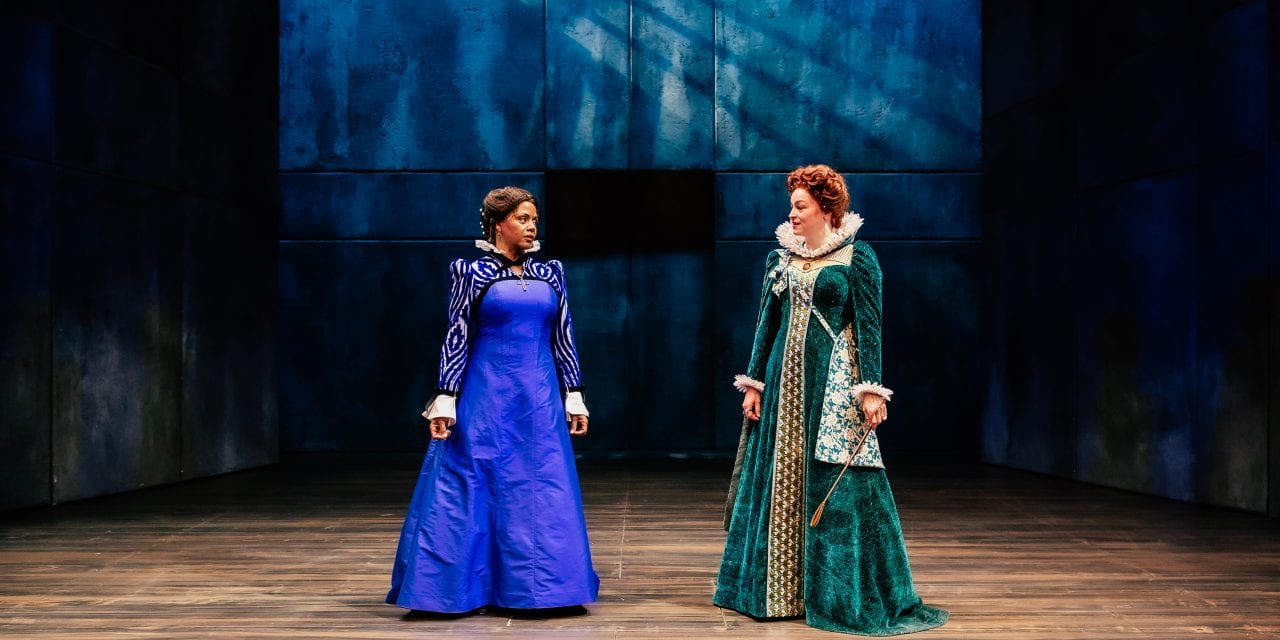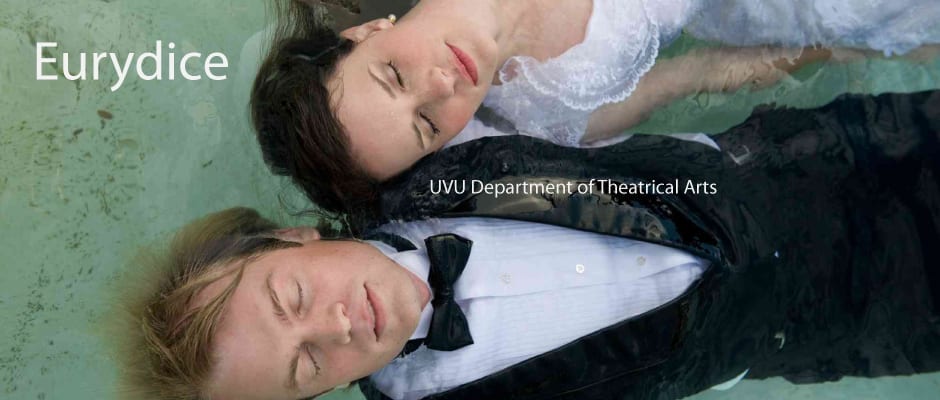SALT LAKE CITY — “The voice of majority is no proof of justice,” says Friedrich Schiller in his play Mary Stuart, published in 1800. This sentiment rings true in the modern adaptation of Schiller’s script Mary Stuart by Jean Stock Goldstone and John Reich.

Show closes January 25, 2020.
While titled Mary Stuart —better known as Mary, Queen of Scots, I found this historical fiction to be more about the archetypical Queen Elizabeth I. Although the feud between the Queens is at the forefront of the story, Mary Stuart provides an intimate glimpse on Queen Elizabeth’s personality, politics, and thought process. I found this to be intriguing as Elizabeth is one of the most fascinating women in history. This production portrays the darkest shadow on Elizabeth’s reign which is her treatment of Mary, and Mary’s untimely demise.
While not entirely historically accurate, Mary Stuart delivers the gist of the queenly cat fight. After suffering major political turmoil, Mary seeks refuge in England and asks for Elizabeth’s sympathy and support. Yet, Elizabeth imprisons Mary for 19 years until the dispute reaches its height in 1586. Each queen has her supporters both open and in secret, both women aspire of ruling, and own a valid claim to the throne. Also, underlying the women’s dislike and threatening feelings towards each other is a religious battle of Catholic (Mary) versus Protestant (Elizabeth). All this animosity—and the women have never even met face to face. But when they do, it is my favorite scene of the play. The tension builds and each woman grapples with her self-serving interests and the correct political move to make to uphold image and support.

Left to right: Jamen Nanthanakumar as Sir Edward Mortimer, Erika LaVonn as Mary of Scotland, Robert Mammana as Robert Dudley, Anne Batest as Elizabeth of England, and Fenton Li as Sir William Davison.
The story is over 400 years old, but it remains relevant in the 21st century. Director Shelley Butler presents many parallels of the past and present. Notably, there is still a stigma regarding females in power. Themes of feminism and the strength of woman are interwoven throughout the play. Also, instead of the bi-partisan divide the US experiences now, it is a bi-religion battle in Elizabethan times. The queens struggle with public image and politics while bombarded with varying opinions from advisers with questionable loyalties, not too different from today’s political climate. I enjoyed the relevance factor and the directional choices made by Butler, including the chilling ending.
In congruence with the direction, sound and light (sound design by John Ballinger and light design by David Neville) set the tone well without being overbearing or over produced. I enjoyed the softer hues in light in the more vulnerable scenes and the burning reds that matched the character’s rage. Mary Stuart is written in the ornate and whimsical fashion of the Tudor time period, and this interpretation fully exuded that quality in each facet of production. Particularly, I relished in the actor’s delivery of the poetic and wordy (in the best way) script.
Fittingly, the lead ladies were a highlight in Mary Stuart. Erika LaVonn delivered a despondent, yet hopeful Mary. LaVonn truly captured the nobility and air of a queen heading to the scaffold. The scene where LaVonn delivers Mary’s last confession is moving and emotional. And, as formerly mentioned, when the queens do at long last meet head to head, there is a palpable and tense aura in the theatre.

Left to right: Robert Scott Smith as Lord Burleigh, Erika LaVonn as Mary Stuart, and Eric Hoffman as Sir Amias Paulet.
That brings me to Anne Bates’s alluring performance as the quintessential Elizabeth left nothing to be desired. Bates emanated power and poise in her dynamic performance. She showed angry bouts of rage, moments of childish vulnerability, and times of cool calculation. Her inflections were captivating, and I hated, admired, and sympathized with the Elizabeth—exactly as many truly felt of the virgin queen at this time in history. As a complement to the women, the supporting male actors all performed superbly. I distinctly liked Jamen Nanthakumar as Sir Edward Mortimer, a Stuart conspirator. Nanthakumar acted with a convincing urgency of saving his beloved queen Mary.
In summation, Mary Stuart is worth a see due to the play’s modern relevance, historical interest, and high production quality. It was thrilling to watch this well-known conflict unfold. Even knowing that Mary loses her head (quite literally), I still felt suspense and intrigue throughout the show. (Hopefully that is not a spoiler, as it is 400-year-old news.) While a tragic tale, there was a historical regicide restitution of sorts as Mary’s son becomes Elizabeth’s successor—this is not in the play but a fun fact. Again, Pioneer Theatre’s Mary Stuart is a must see for the lover of language, the Elizabethan enthusiast, or any history buffs out there.

This review generously sponsored by a grant from the Salt Lake County Zoo, Arts, and Parks program.





